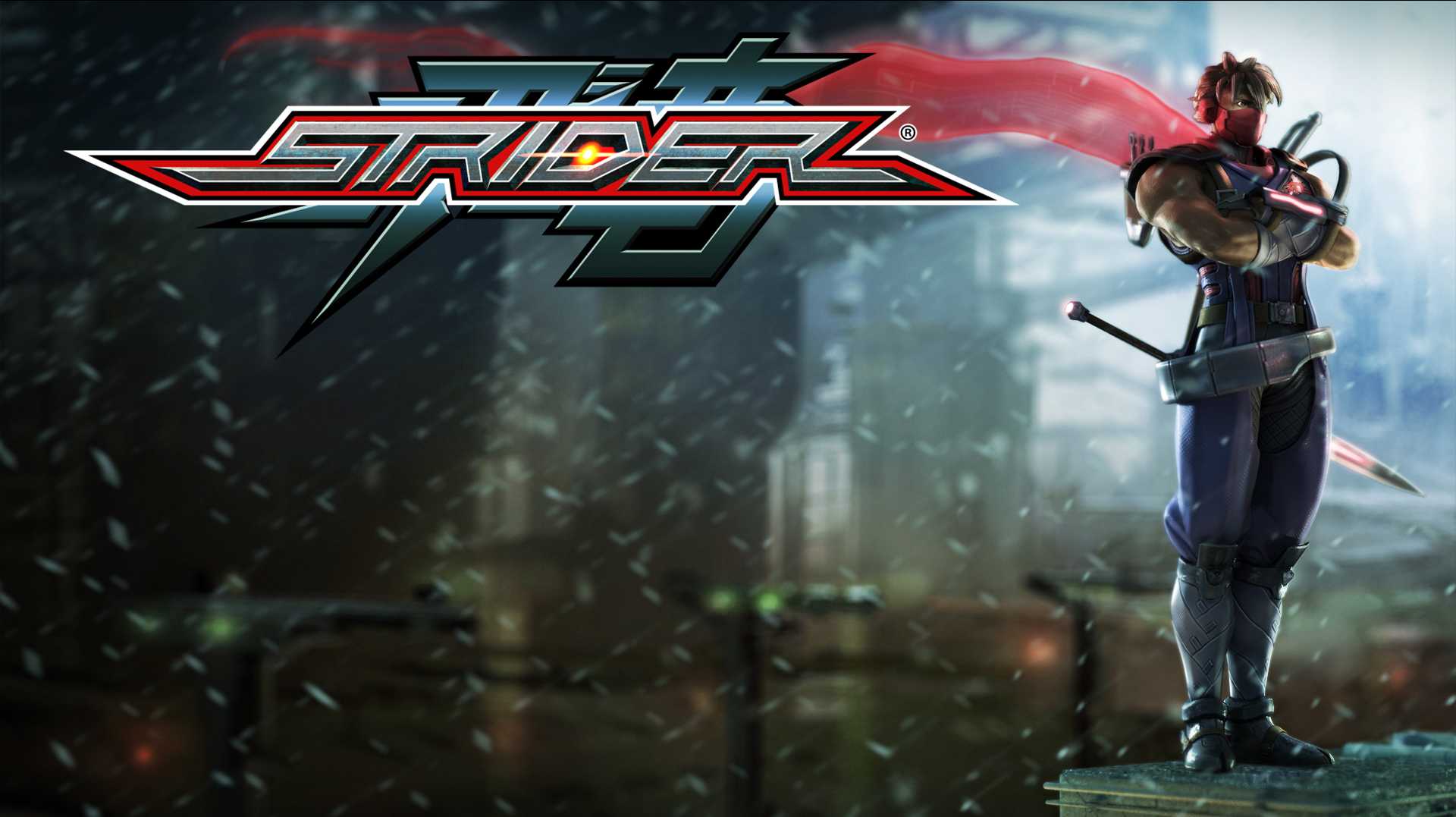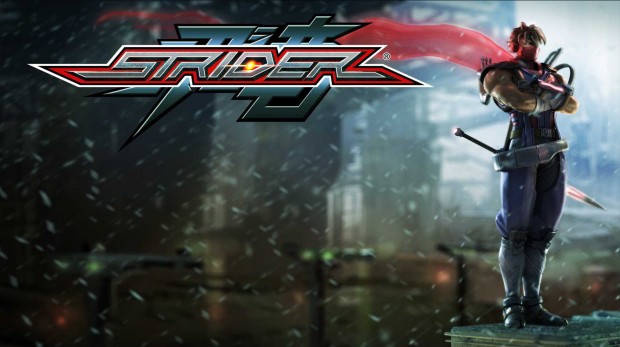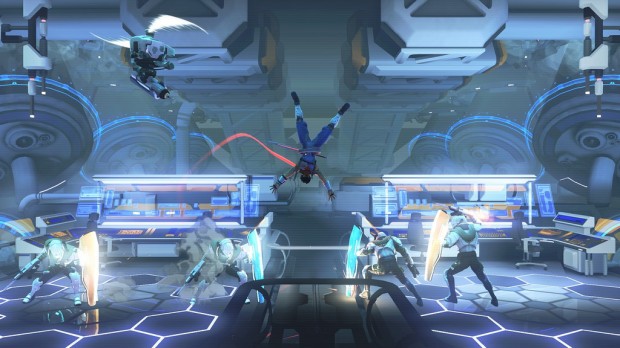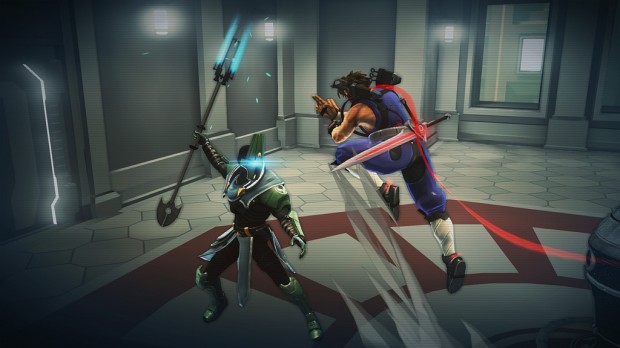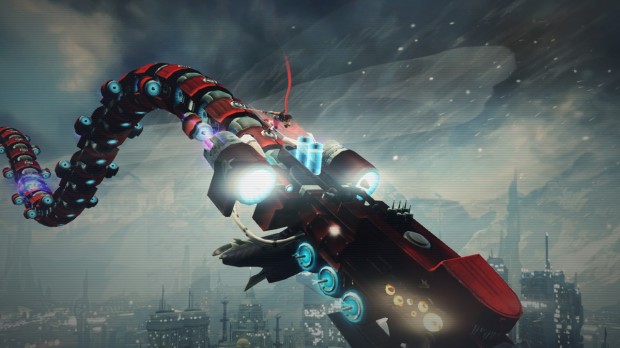Strider review (XBLA)
Strider was developed by Double Helix Games and published by Capcom. It was released on February 19, 2014 on Xbox Live Arcade and Xbox One for $14.99. An Xbox 360 copy was provided for review purposes.
Strider has had a long history in gaming, despite not having too many games. First arriving in arcades in 1989, Strider‘s fast-paced ninja gameplay spawned an NES port and numerous knock-offs. Despite being well-received, the game didn’t get a true sequel until 1999’s Strider II. Outside of being a playable fighter in the Marvel vs. Capcom series, protagonist Strider Hiryu hasn’t been in a game for over 10 years.
Now the franchise has finally been awoken from its slumber with Strider, a reboot that re-tells the original game’s story. Taking place in the year 2048, the game opens with an organization of high-tech ninjas known as Striders sending their best agent, Hiryu, on a deadly mission. Armed with his deadly plasma Cypher and loads of ninja skills, Hiryu is tasked with assassinating the the city of Kazahk’s evil dictator, Grandmaster Meio. The adventure is great at delivering fast-paced action, at least when there aren’t too many speed bumps in the way.
Here’s what we liked:
Classic Strider – From the moment the game begins, one thing is extremely obvious: Strider’s classic gameplay is back and better than ever. Swinging your Cypher through hoards of enemies feels very satisfying; enemies fall quickly and button mashing is encouraged. Running and jumping has a nice sense of speed and momentum, and the ability to climb any surface makes for great platforming options. What makes the gameplay great, however, is the way combat meshes with agility, as Strider can attack from almost any position, making for some excellent mid-air moments. The game hits the sweet spot, balancing combat and platforming perfectly. You get some fighting arenas, you get some great platforming segments, but most of the time you get a great mixture of both. It all comes together to give the game a fantastic flow, with fast-paced action and heart-pumping excitement spread throughout the experience.
Progression – Hiryu feels like a super-ninja from the outset of the game, but his skills only get better. There are a lot of new abilities to unlock as you progress through the story, most of them gained after beating a boss. No upgrade feels useless; everything has its place, whether it be for new combat opportunities or for getting past tricky platforming puzzles. Character progression happens slow enough for you to get used to your new skills, but fast enough so things never get boring. The path to becoming the ultimate weapon is filled with deadly enemies and treacherous terrain, but there’s never a moment were you feel unprepared for the challenges ahead.
Boss battles – Plowing through waves of grunts and flying machines feels awesome, but nothing beats the feeling of defeating a boss. The game is loaded with bosses; from a flying mechanical dragon to a trio of ninja sisters, the game never runs out of over-the-top ideas. The need to memorize patterns and timing, occasionally to an exacting degree, makes boss battles a welcome challenge to break up the regular gameplay. Small, human bosses make you feel like a true ninja taking on a formidable foe, while larger bosses result in the game’s most exciting moments.
Here’s what we didn’t like:
Metroidvania – Double Helix took some inspiration from Shadow Complex when it created Strider. While that sounds promising, it ends up being a double-edged sword. On one hand, the steady stream of new abilities you gain throughout the game makes it constantly feel fresh. The problem is Strider never feels like a game in which you’d want to backtrack. Myriad goodies, from concept art to challenge levels, are hidden throughout the map, but none of them are vital to finishing the game. You will never experience a strong urge to go off the beaten path, since some of the more essential hidden upgrades are pretty easy to find. With loading screens between areas, the game feels less like a joined world and more like a series of levels you should progress through linearly. And level design unfortunately takes a hit to accommodate the game’s Metroidvania approach, occasionally making it hard to understand where you are supposed to be going next even with the mini-map aiding you.
Spamming – Every once and a while you will walk into an area with too many enemies wielding powerful guns. When in these areas you’ll be shot at from all directions with attacks you can’t deflect, causing you to get knocked down or frozen repeatedly. Getting knocked back into the deep hole you just climbed out of really stinks, too. It can be really hard to find your footing while under a barrage of cheap shots, which is a problem that feels like it could be easily avoided by making stun times shorter and the knock-back a lot less dramatic.
Strider is a faithful resurrection of a long-dormant franchise. It doesn’t break new ground for the series, but it makes everything about being Hiryu is awesome, from the always-slashing combat to the easy maneuverability to the constant stream of interesting new abilities. The world around Strider doesn’t always live up to its potential, but the problematic moments do little to dampen the overall awesomeness of the entire adventure. If you’re looking for old-school fun that will make you feel like a little kid watching cartoons, Strider‘s your game.
Score: Buy it!

